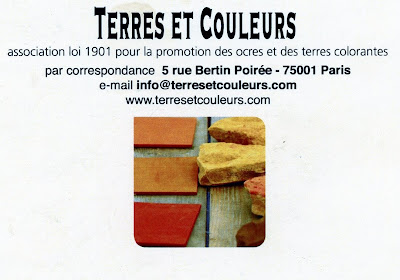 |
| 16 Grande Rue gets the treatment |
On the Saturday, 7 September 2013, a large number of volunteers descended on the
cité ideale of Richelieu to 'bring the good news' of
ochre-based paints to the scruffy old buildings and their grand doorways. The '
Association' of
Terres et Couleurs was formed in 1995 by the manufacturers of ochre-based architectural paints, who seek to re-introduce these ancient products that have, until recently, been eclipsed by 'modern' paint technology. While these 'modern' paints may have many merits for new construction, the qualities of these older earths-based paints have come to be overlooked. In the same way, the merits of several lime-based building products had been smothered in the race to newer, cheaper, high-technology methods of building.
So a group of architects, historians, building experts, and painters and manufacturers have come together to encourage the revival and use of these products. In the UK,
SPAB, the society formed by William Morris a hundred and fifty years ago, encourages the revival of 'ancient' construction practice, particularly that of lime-based mortars, in the very country where 'Portland' cement was invented. Damp, non-porosity, mould, garish 'modern' chemical colours have all come to be seen as the problems of these newer construction methods. This is of importance in protected historic towns such as Richelieu, whose buildings were all constructed 400 years ago.
The association's volunteers arrive in a new location (Richelieu is the 20th town chosen) for a day-long team effort to clean-off and re-paint doors and other chosen timber architectural features. In this way the viability of the paints is demonstrated, while the old fabric gets a good 'wash and brush up'. The paint itself and the volunteers' labour are supplied for nothing, while the building owners must prepare the base woodwork for the process. According to their condition, many doors in Richelieu were sand-blasted clean of the former grime and coatings before the day started.
All the doors on the Grande Rue (save one, for witness of the former condition!) were painted in the same 'bull's blood' colour, while the town's ancient gates were coated in a 'yellow ochre' colour.
The project had the support of the Townhall - their own doors were repainted too! - and commanded the intellectual and historic support of
Bâtiments de France. That
'bull's blood' - a high ferrous oxide pigment colour - was indeed an appropriate tint is shown by its widespead use at the
Château de Thouars (also by Jacques Lemercier), and by some existing buildings in the domainal park of the cardinal-duc.
 |
| the brochure title page of terres et coleurs |
CLICK BELOW
 |
| 16 Grande Rue after |



























